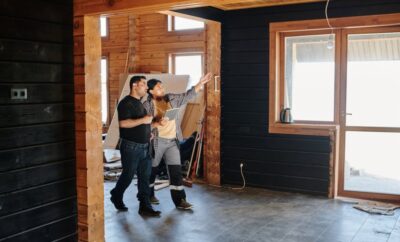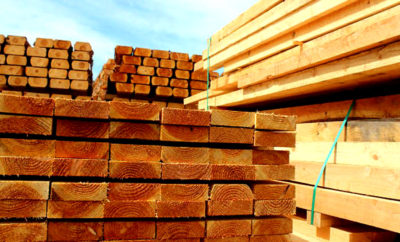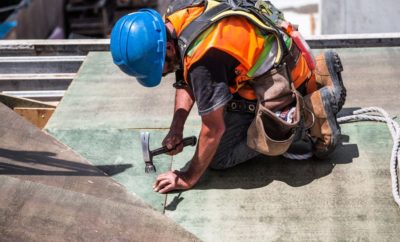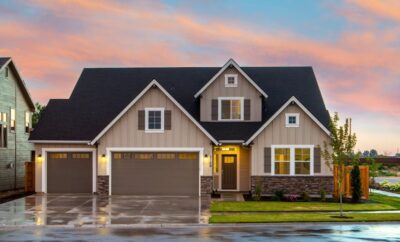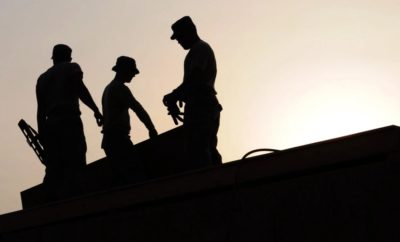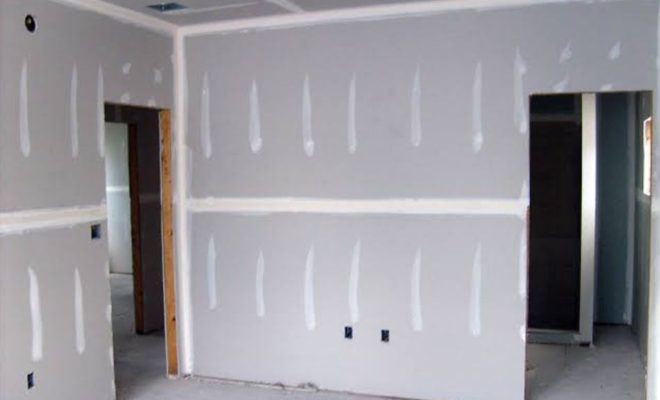
What is a Drywall?
Drywall is a panel made of calcium sulfate dihydrate (gypsum), with or without additives, typically extruded between thick sheets of facer and backer paper, used in the construction of interior walls and ceilings.
Drywall is also known as plasterboard, wallboard, sheet rock, gypsum board, buster board, custard board, or gypsum panel.
The plaster is mixed with fiber (typically paper, fiberglass, asbestos, or a combination of these materials), plasticizer, foaming agent, and various additives that can reduce mildew, flammability, and water absorption.
How Drywall is made?
A wallboard panel consists of a layer of gypsum plaster sandwiched between two layers of paper. The raw gypsum, CaSO4·2 H2O, is heated to drive off the water then slightly rehydrated to produce the hemihydrate of calcium sulfate (CaSO4·1⁄2 H2O).
The plaster is mixed with fibre (typically paper and/or fibreglass), plasticizer, foaming agent, finely ground gypsum crystal as an accelerator, EDTA, starch or other chelate as a retarder, various additives that may decrease mildew and increase fire resistance, and wax emulsion or silanes for lower water absorption.
The board is then formed by sandwiching a core of the wet mixture between two sheets of heavy paper or fibreglass mats.
When the core sets it is then dried in a large drying chamber, and the sandwich becomes rigid and strong enough for use as a building material.
Drying chambers typically use natural gas today.
To dry 1 MSF (1,000 square feet (93 m2)) of wallboard, between 1,750,000 and 2,490,000 BTU (1,850,000 and 2,630,000 kJ) is required.
Organic dispersants/plasticisers are used so the slurry will flow during manufacture, and to reduce the water and hence the drying time.
Coal-fired power stations include devices called scrubbers to remove sulphur from their exhaust emissions.
The sulphur is absorbed by powdered limestone in a process called flue-gas desulphurization (FGD), which produces a number of new substances. One is called “FGD gypsum”.
This is commonly used in drywall construction in the United States and elsewhere.
Drywall Specifications
Drywall panels in the United States are manufactured in 48,-54,-and-96-inch (1.2, 1.4, and 2.4 m) wide panels in varying lengths to suit the application, though 48-inch is by far the most common width.
Lengths up to 16 feet (4.9 m) are commonly available, though the most common length is 8 feet (2.4 m).
Common panel thicknesses are 1⁄2 and 5⁄8 inch (13 and 16 mm), and 1⁄4, 3⁄8, 3⁄4, and 1 inch (6.4, 9.5, 19.1, and 25.4 mm) thicknesses are also used in specific applications.
Types of Drywall in the United States and Canada
- Regular white board, from 1⁄4 to 3⁄4 inch (6.3 to 19 mm) thickness
- Fire-resistant (“Type X”), different thickness and multiple layers of wallboard provide increased fire rating based on the time a specific wall assembly can withstand a standardized fire test.
Often perlite, vermiculite, and boric acid are added to improve fire resistance.
- Greenboard, the drywall that contains an oil-based additive in the green colored paper covering that provides moisture resistance.
It is commonly used in wash rooms and other areas expected to experience elevated levels of humidity.
- Blueboard, blue face paper forms a strong bond with a skim coat or a built-up plaster finish providing both water and mold resistance.
- Cement board, which is more water-resistant than greenboard, for use in showers or sauna rooms, and as a base for ceramic tile.
- Soundboard is made from wood fibers to increase the sound transmission class.
- Soundproof drywall is a laminated drywall made with gypsum and other materials such as damping polymers to significantly increase the sound transmission class rating.
- Mold-resistant, paperless drywall with fiberglass face
- Enviroboard, a board made from recycled agricultural materials
- Lead-lined drywall, a drywall used around radiological equipment.
- Foil-backed drywall used as a vapor barrier.
- Controlled density (CD), also called ceiling board, which is available only in 1⁄2 inch (13 mm) thickness and is significantly stiffer than regular white board.
- EcoRock, a drywall that uses a combination of 20 materials including recycled fly ash, slag, kiln dust and fillers and no starch cellulose; it is advertised as being environmentally friendly due to the use of recycled materials and an energy efficient process.
- Gypsum “Firecode C”. This board is similar in composition to Type X, except for more glass fibres and a form of vermiculite, used to reduce shrinkage.
When exposed to high heat, the gypsum core shrinks but this additive expands at about the same rate, so the gypsum core is more stable in a fire, and remains in place even after the gypsum dries up.


